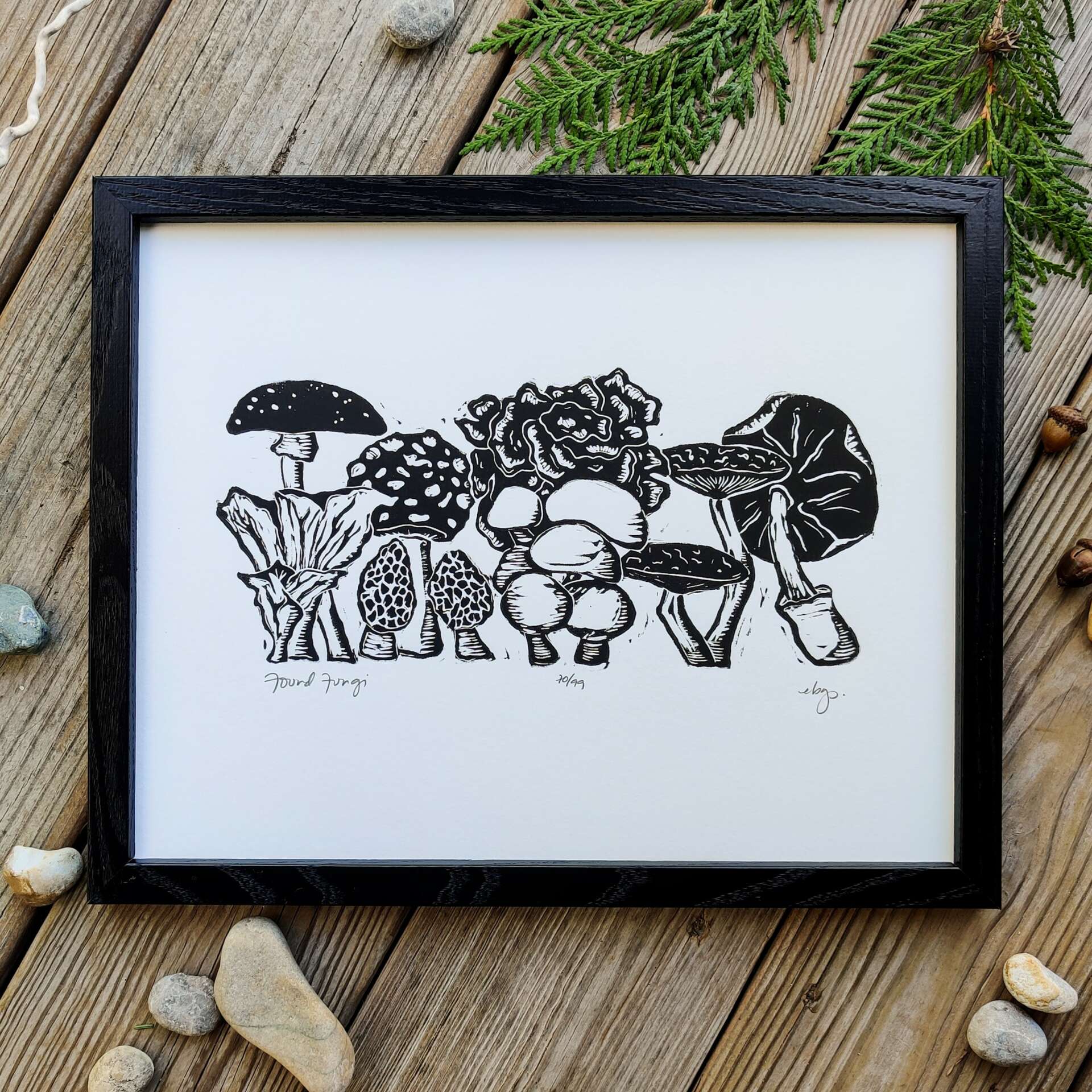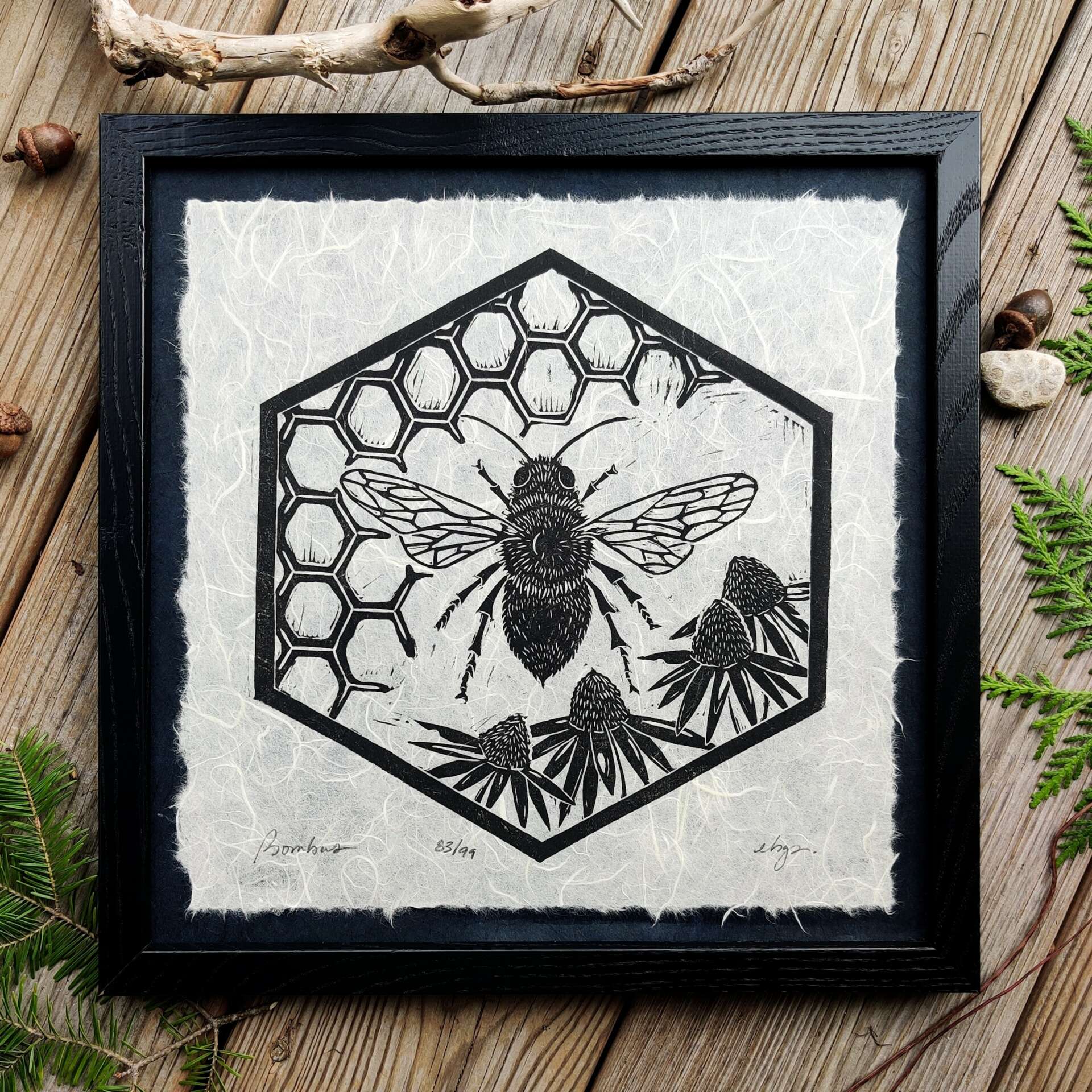Alright – so today we’ve got the honor of introducing you to Betsy Stecker. We think you’ll enjoy our conversation, we’ve shared it below.
Betsy, thanks for joining us, excited to have you contributing your stories and insights. It’s always helpful to hear about times when someone’s had to take a risk – how did they think through the decision, why did they take the risk, and what ended up happening. We’d love to hear about a risk you’ve taken.
After a 30-year career in communications and education, I made a decision to build a completely new career for myself: one for which I had no formal education, apprenticeship, or professional experience: a career in art. I was always creative, which I expressed when I had opportunity, but rarely through art. In 2018 I made a decision to explore printmaking, and I taught myself linocut blockprinting. My first block was a chickadee. My husband, an architect who had formal art education, remarked on the talent he could see, which encouraged me to do more. Within 6 months I began selling via Etsy and to friends. The following summer I showed in a few art fairs. Then the pandemic hit ,which served as a deep-dive into creativity. Although I was still working full-time in education, I focused on carving new blocks. When in-person retail resumed, I filled my schedule with art fairs and opened a small storefront in a creative marketplace, all while still working full-time in a school. In 2021, I officially changed careers and doubled the size of my storefront, and I show in 20 art festivals a year, and it’s the most fulfilling full-time job I’ve ever had. I’ve never worked so hard.




Great, appreciate you sharing that with us. Can you explain your artistic process to our readers, what inspires you to make art?
I am a linoleum printmaker. I sketch onto linoleum blocks, carve the designs in relief, apply ink to the carved blocks, and apply pressure to transfer the designs onto paper and textiles. I print in limited, numbered editions and sign each work. Almost all of my work is nature-inspired, and I produce fine art prints and textiles such as pillowcovers, handmade totes, aprons, stationery, and more. I also apply my art to durables I do not make, such as ceramic mugs and enamel pins.
I love being a printmaker because it is a very accessible medium; while my favorite customer is that person who is joyfully buying their very first piece of original art, I also am grateful for collectors and for the nature-loving community at large. I am inspired by frequent travels to Presque Isle, a pristine and natural place in northern Michigan. While trees, flowers, and wildlife take center stage, I also am fond of midcentury art, evidenced by pattern motifs that appear in some of my prints.
I am most proud to provide economically accessible original art. Because all my prints are handmade prints off my blocks, they are considered original fine art, yet because they are originals made in multiples, most are priced under $50. So my prints are all signed works, but they don’t cost hundreds of dollars. I also make most of my prints in standard-frame sizes, which means no custom framing is needed. Making original art financially accessible is important.
How can we best help foster a strong, supportive environment for artists and creatives?
Having worked a long career in education, I am passionate about educating for real life. Too many art schools successfully develop artistic talent, but they completely fail in developing artists who can make a career selling art. It is the responsibility of college to prepare its students for their professional lives. For artists, this means learning how to photograph, market, and merchandise their art, and it means learning how to be a businessperson. It may not be as fun as spending time in a studio, but after graduation that studio time — if they can even afford to have their own studio — is going to have to pay the rent, and artists need to have those money-making skills. It’s so very important!




Is there something you think non-creatives will struggle to understand about your journey as a creative? Maybe you can provide some insight – you never know who might benefit from the enlightenment.
With my sudden transition from art-fair goer to art-fair artist, I have some “now I know” tidbits that I share with my social media following, such as : (1) Always ask before photographing art. Yes, we’re in a digital world of sharing, but it’s polite and appropriate to ask first
(2) Don’t assume that you’re doing an artist a favor purchasing their art, or think you can name your own price. If you wouldn’t offer a Target cashier an amount of money that’s less than the total of your purchases, you shouldn’t do it to an artist, either. We thoughtfully price our art based on our time, cost of materials, and expense of the venues we’re in to sell. The price is the price.
(3) Bring cash to art festivals — most of us can take credit card payments, but we pay a lot in fees, and we don’t have huge mark-ups on our art. Pay in cash when you can.
Contact Info:
- Website: https://www.bigmittenlinocuts.com/
- Instagram: https://www.instagram.com/bigmittenlinocuts
- Facebook: https://www.facebook.com/bigmittenlinocuts
- Other: My brick-and-mortar is called Forested and is inside the Rust Belt Market in Ferndale, Michigan. The Rust Belt Market is home to 40+ local artists & merchants. The website of Forested is: https://www.forestedgoods.com/
Image Credits
All images by Betsy Stecker.


